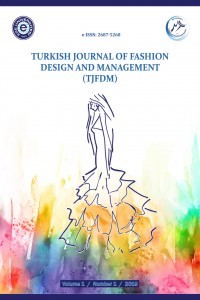GÖLGELENDİRME SİSTEMİNDE KULLANILAN TEKSTİL YAPILARINA ÖRNEK; FERMUARLI PERDE
Dünya’daki yaşamın ana kaynağı olan güneş, yaz aylarında kavurucu etkisi nedeniyle bazı rahatsız edici koşullar oluşturmaktadır. Bir binanın iç kısmının doğrudan güneşe maruz kalması sadece ısıtma sezonu sırasında konutlar gibi bazı yapı tiplerinde arzu edilir diğer türlü bütün yapılarda (evlerde, işyeri ya da hastaneler gibi) arzu edilmez. Bu nedenle yazın evlerimizin soğutulabilmesi için klima sistemine veya ısınmayı baştan önleyici gölgelendirme sistemlerine ihtiyaç duyulmaktadır. Ülkemizde bir evin klimayla soğutulması için ihtiyaç duyulan soğutma yükünün ortalama % 52'sinin cam ısı kazancından kaynaklandığı hesaplanmaktadır. Bu nedenle özellikle yeni mimari yapılarda cam yüzeylerin daha fazla kullanıldığı da göz önünde bulundurulursa, daha etkin gölgelendirme sistemlerinin kullanılması gerekmektedir.
Binalarda gölgelendirme sistemi iç ve dış sistemler olmak üzere ikiye ayırmaktadır. Buna göre binaların veya özellikle pencere önlerinin bu zararlı ışıklara istenilen şeklide geçit verilebilmesi için güneş kırıcı perde sistemleri uygulanır. Bu amaçla kullanılan tekstil yüzeylerinden biri de fermuarla perde sistemidir. Fermuarlı perde, motorlu panjur sistemi gibi çalışan ancak ana bileşenleri alüminyum, motor ve teknik tekstil kumaşıdır. Bu ürün, bir yeri güneşin aşırı sıcaklığından, rüzgardan, soğuktan korumak ve ideal bir iç mekan iklimi yaratmak için özel olarak tasarlanmıştır. Fermuarlı perde sistemi, kış aylarında rüzgarın etkisini azaltarak evi hasardan korurken, bir yandan istenmeyen ısının içeri girmesini engelleyerek aşırı ısınmayı önlemeye yardımcı olurken, aynı zamanda optimum ışık ve ısı penetrasyonunu sağlar. Bu, yazın soğutma ve ısıtmada, kışın ısıtmada büyük tasarruf sağlar.
EXAMPLE OF TEXTILE STRUCTURES USED IN THE SHADING SYSTEM; ZIPPERED CURTAIN
The sun, which is the main source of life on Earth, creates some uncomfortable conditions in summer due to its scorching effect. Exposure of the interior of a building to direct sun is only desirable in some building type, such as residences, during the heating season, and in all other structures (such as homes, workplaces or hospitals). For this reason, air conditioning systems or shading systems that prevent heating from the beginning are needed to cool our homes in summer. It is calculated that, on average, 52% of the cooling load needed to cool a house with air conditioning in our country is caused by glass heat gain. For this reason, considering that glass surfaces are used more in new architectural structures, more effective shading systems should be used.
Shading systems in building is divided into two as internal and external systems. Accordingly, sun shading curtain systems are applied in order to allow the passage of these harmful lights in the buildings or especially in front of the windows as desired. One of the textile surfaces used for this propose is the curtain system with zipper. Zippered curtain works like a motorized blind system, but its main components are aluminum, motor and technical textile fabric. This product is specially designed to protect a place from the extreme heat of the sun, wind, cold and create an ideal indoor climate. The zippered curtain system protects the house from damage by reducing the effect of the wind in winter months, while helping to prevent overheating by preventing unwanted heat from entering inside, while at the same time providing optimum light and heat penetration. This provides great savings in cooling and heating in summer and heating in winter.
___
- Referans 1] H. Bulgurcu, M. Küçük, C. Özer, 2014, “Bina Gölgelendirme Sistemleri ile Binalarda Enerji Verimliliği”, 2. Ulusal İklimlendirme Soğutma Eğitimi Sempozyumu ve Sergisi, p. 623-636
- Referans 2] N. Nhargava and V. Shivankar, 2015, “Technical textiles- growth potential and prospects in India”, International Journal on Textile Engineering and Processess, vol. 1(2), pp. 16-19
- Referans 3] S. Aliprandi, C. Monticelli, A. Zanelli, 2015, “Technical textiles and thin insulation materials new scenarios for the energetic retrofitting”, Energy Procedia, vol. 78, pp. 501-506
- Referans 4] P. Heyse, G. Buyle, B. Walendy, P. Beccarelli, G. Loriga, D. Zangani, A. Tempesti, 2015, “Multitexco-high performance smart multifunctional technical textiles for the construction sector”, Procedia Engineering, vol. 114, pp. 11-17
- Referans 5] Key world energy statistics, International Enegy Agency, pp.44, 2017
- Referans 6] Specification of Solar Screen 85, https://www.avz.nl/en/downloads/2868/solidscreen-85-en.pdf
- Referans 7] Composite textiles & membranes catalogue, Ferrari Architecture, www.sergeferrari.com
- Referans 8] www.recasens.com/en/producto/recscreen
- Referans 9] İ. Atmaca and A. Yiğit, 2009, “Isıl konfor ile ilgili mevcut standartlar ve konfor parametrelerinin çeşitli modeler ile incelenmesi, IX. Ulusal Tesisat Mühendisliği Kongresi, 06-09 Mayıs
- Referans 10] EN 14501- European Standard, Solar Protection - Thermal and Optical Performance of Fabrics
- Referans 11] Solar protection-thermal and optical performance of fabrics, http://www.sunscreen-mermet.com/technical-support/solar-protection-thermal-and-optical-performance-of-fabrics.html#visual-management-visual-comfort
